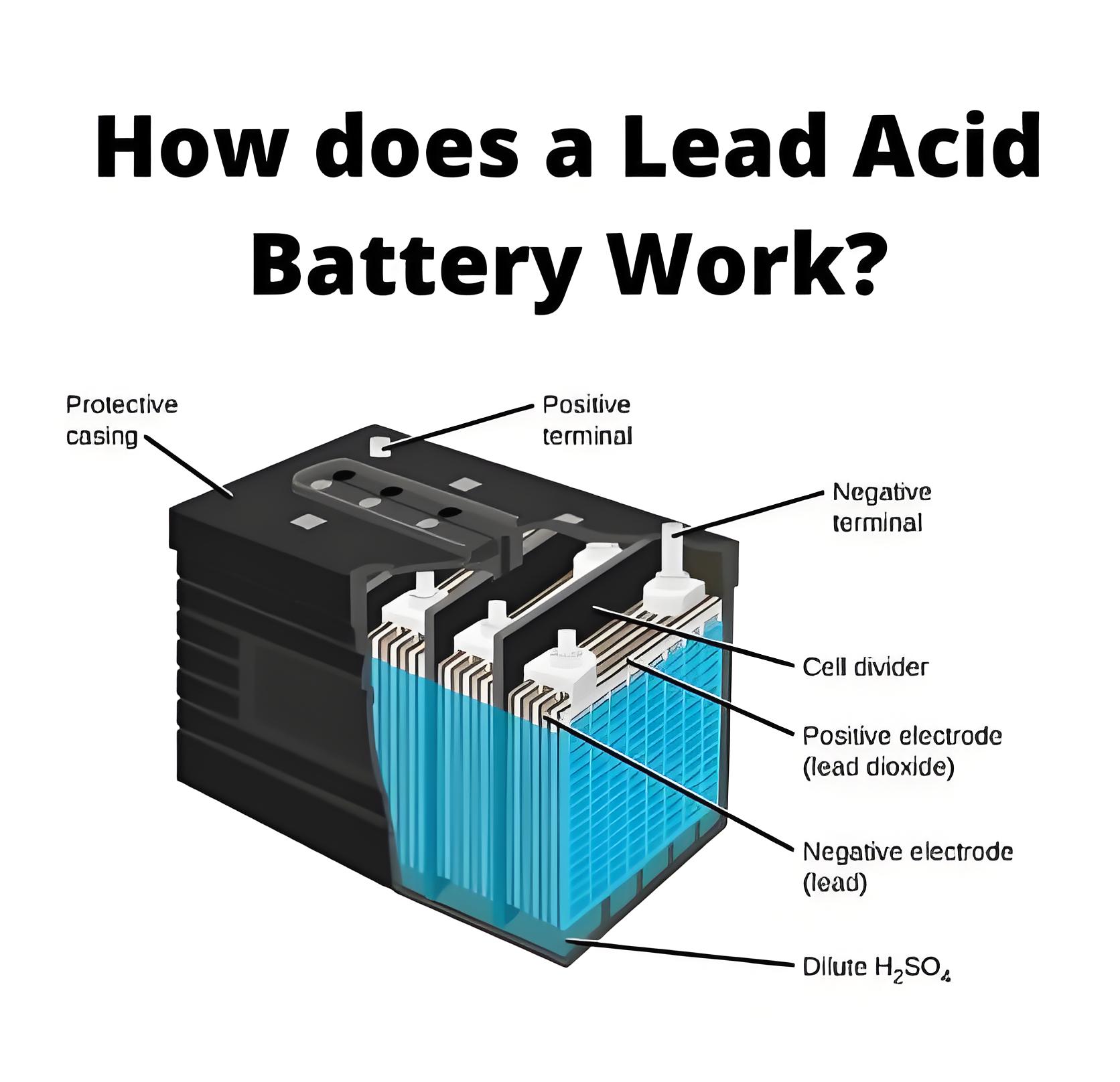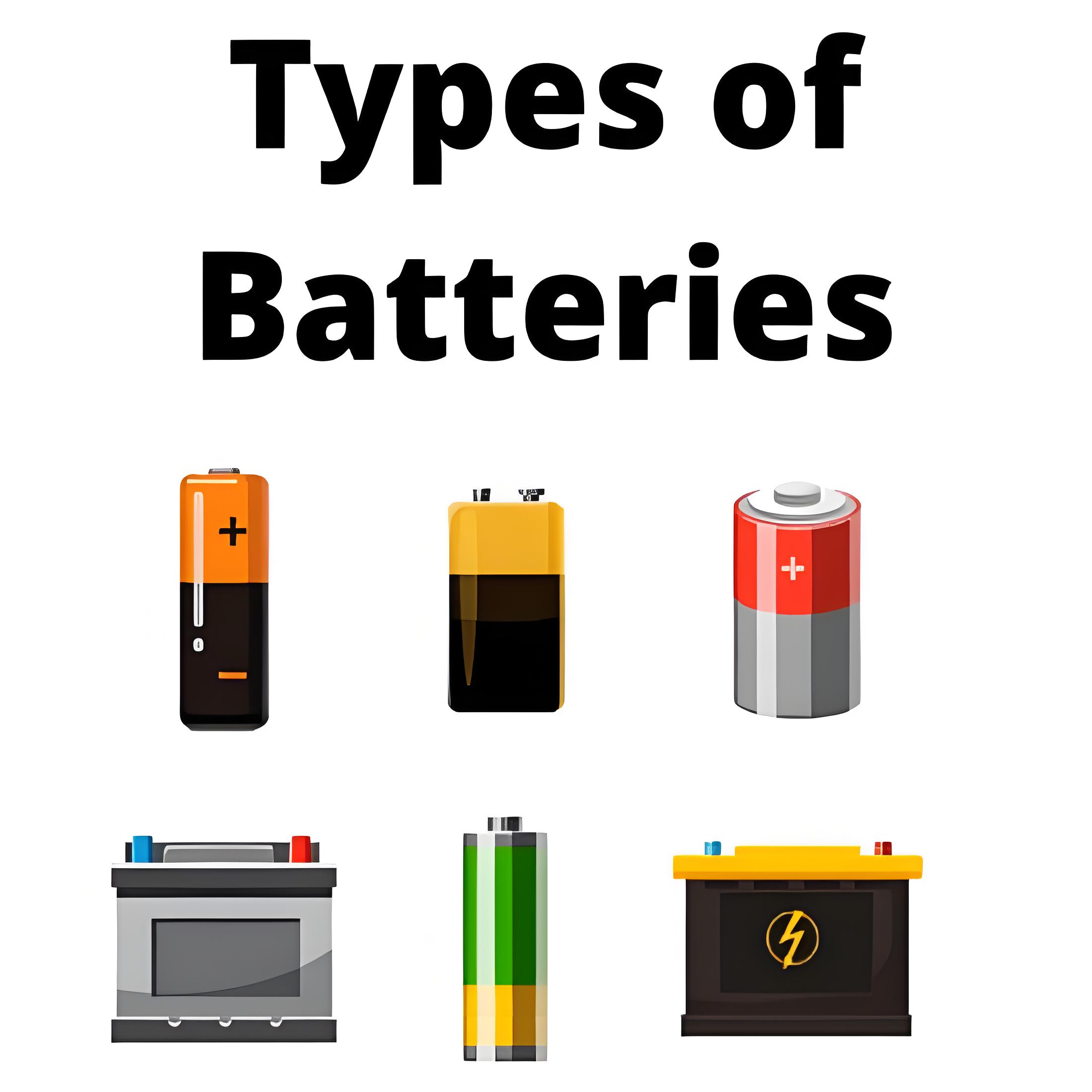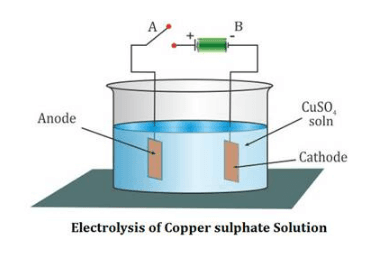Battery Working Principle: How does a Battery Work?
Working Principle of Battery
A battery works on the oxidation and reduction reaction of an electrolyte with metals. When two dissimilar metallic substances, called electrode, are placed in a diluted electrolyte, oxidation and reduction reaction take place in the electrodes respectively depending upon the electron affinity of the metal of the electrodes. As a result of the oxidation reaction, one electrode gets negatively charged called cathode and due to the reduction reaction, another electrode gets positively charged called anode.
The cathode forms the negative terminal whereas anode forms the positive terminal of a battery. To understand the basic principle of battery properly, first, we should have some basic concept of electrolytes and electrons affinity. Actually, when two dissimilar metals are immersed in an electrolyte, there will be a potential difference produced between these metals.
It is found that, when some specific compounds are added to water, they get dissolved and produce negative and positive ions. This type of compound is called an electrolyte. The popular examples of electrolytes are almost all kinds of salts, acids, and bases etc. The energy released during accepting an electron by a neutral atom is known as electron affinity. As the atomic structure for different materials are different, the electron affinity of different materials will differ.
If two different kinds of metals are immersed in the same electrolyte solution, one of them will gain electrons and the other will release electrons. Which metal (or metallic compound) will gain electrons and which will lose electrons, depend upon the electron affinity of these metals. The metal with low electron affinity will gain electrons from the negative ions of the electrolyte solution.
On the other hand, the metal with high electron affinity will release electrons and these electrons come out into the electrolyte solution and are added to the positive ions of the solution. In this way, one of these metals gains electrons and another one loses electrons. As a result, there will be a difference in electron concentration between these two metals.
This difference in electron concentration causes an electrical potential difference developed between the metals. This electrical potential difference or emf can be utilized as a source of voltage in any electronics or electrical circuit. This is a general and basic principle of battery and this is how a battery works.
All batteries cells are based only on this basic principle. Let’s discuss one by one. As we said earlier, Alessandro Volta developed the first battery cell, and this cell is popularly known as the simple voltaic cell. This type of simple cell can be created very easily. Take one container and fill it with diluted sulfuric acid as the electrolyte. Now we immerse one zinc and one copper rod in the solution and we connect them externally by an electric load. Now your simple voltaic cell is completed. Current will start flowing through the external load.

Zinc in a diluted sulfuric acid gives up electrons as below:

These Zn + + ions pass into the electrolyte, and each of the Zn + + ions leaves two electrons in the rod. As a result of the above oxidation reaction, the zinc electrode is left negatively charged and hence acts as a cathode. Consequently, the concentration of Zn + + ions near the cathode in the electrolyte increases.
As per the property of electrolyte, the diluted sulfuric acid and water have already disassociated into positive hydronium ions and negative sulfate ions as given below:

Due to the high concentration of Zn+ + ions near the cathode, the H3O+ ions get repelled towards the copper electrode and get discharged by absorbing electrons from atoms of the copper rod. The following reaction takes place at the anode:

As a result of the reduction reaction taking place at the copper electrode, copper rod gets positively charged and hence it acts as an anode.
Daniell Cell
The Daniell cell consists of a copper vessel containing copper sulfate solution. The copper vessel itself acts as the positive electrode. A porous pot containing diluted sulfuric acid is placed in the copper vessel. An amalgamated zinc rod, dipped inside the sulfuric acid, acts as the negative electrode.

The diluted sulfuric acid in the porous pot reacts with zinc and as result hydrogen gets elaborated. The reaction takes place as below:

The formation of ZnSO4 in the porous pot does not affect the working of the cell until crystals of ZnSO4 is deposited. The hydrogen gas passes through the porous pot and reacts with the CuSO4 solution as below:

Copper so formed gets deposited on the copper vessel.
History of the Battery
In the year of 1936 during the middle of summer, an ancient tomb was discovered during construction of a new railway line near Bagdad city in Iraq. The relics found in that tomb were about 2000 years old. Among these relics, there were some clay jars sealed at the top with the pitch. An iron rod, surrounded by a cylindrical tube made of a wrapped copper sheet was projected out from this sealed top.

When discoverers filled these pots with an acidic liquid, they found a potential difference of around 2 volts between the iron and copper. These clay jars were suspected to be 2000-year-old battery cells. They named the pot as Parthian battery.
In 1786, Luigi Galvani, an Italian anatomist, and physiologist got surprised to see that when he touched dead frog legs with two different metals, the muscles of the legs contracted.

He could not understand the actual reason otherwise he would have been known as the first inventor of the battery cell. He thought that the reaction might be due to a property of the tissues.

After that, Alessandro Volta realized the same phenomenon on cardboard soaked in salt water instead of frog legs. He sandwiched a copper disc and a zinc disc with a piece of cardboard soaked in salt water in between them and found a potential difference between the copper and zinc.
Statement: Respect the original, good articles worth sharing, if there is infringement please contact delete.
Welcome to our electricity community! Established to facilitate the exchange and cooperation in the electricity industry and bridge professionals, enthusiasts, and related enterprises.





